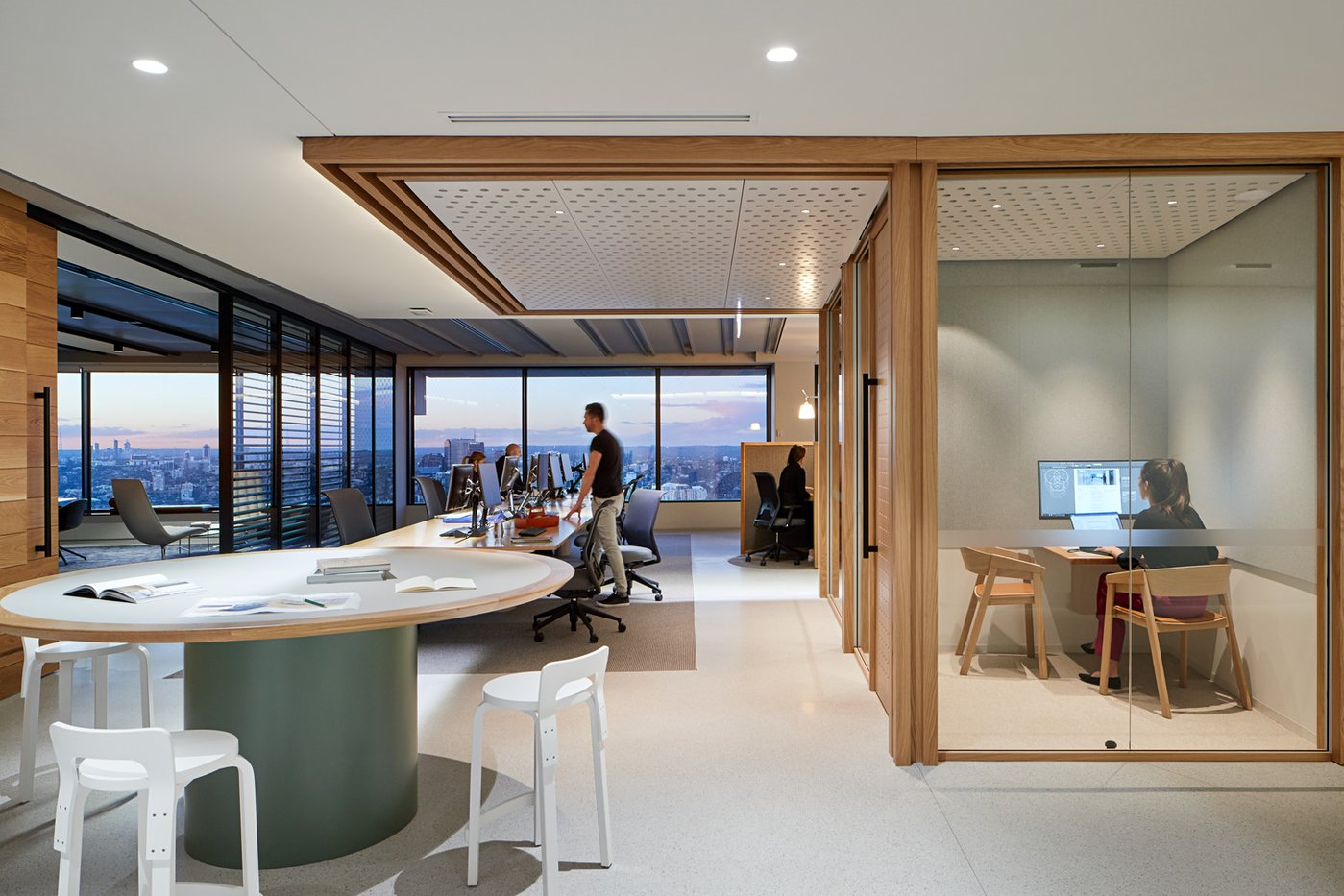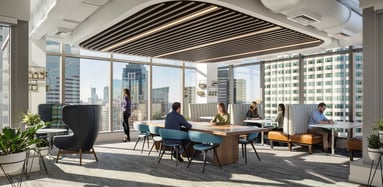
There is plenty of debate around the future of the office and even more around Activity Based Working (ABW) or "hot desking" post COVID-19. We took a deeper look at the evolution of the workplace.
Organisations are facing difficult decisions around ways of working; should they revert to fixed desk arrangements even though utilisation continues to trend downward? Or should they be more pragmatic and focus on increasing the safety and wellbeing of staff in the short term?
While there are plenty of opinions, the most talked about seems to be the death of ‘hot desking’ and a return to fixed desk arrangements. But, is that really the best approach?
Sharing is not just limited to desks
Many arguments focus specifically on the risk of shared workstations, when the reality is, most sharing and interaction takes place throughout the office. Pantry rooms, meeting rooms, breakout and focus spaces are also prone to the risks of contamination.
In fact, we typically see meeting room utilisation to be much higher than workstations. This suggests that the level of movement in and out of meeting rooms potentially poses a far greater risk. If we are calling for the death of shared desks, then we might as well discount the entire workplace.
Office density post-SARS
Declarations around the end of “hot desking” must be tempered against regional work cultures and practices.
In Europe and the US, office density norms are around 150-200 sqft. per desk according to the World Property Journal. In Australia and New Zealand, standards remain more generous at around 90-150 sqft. per desk.
During the outbreak of SARS in 2003, many were predicting office density to decrease in the years following, particularly in Asia where the impact was most felt. Instead, organisations in Hong Kong, China and India reduced their desk space from 100 sqft to 50-60 sqft over the past decade.
While SARS pales in significance to the global impact of COVID-19, it did teach us that organisations moved in an opposite direction to what might have been expected.
Flexibility in the workplace
While these past few months have been far from business as usual, one thing is for sure; the stigma associated with remote working has well and truly been put to bed.
COVID-19 has triggered arguably the single biggest big bang digital revolution in history. We have proven we can work from home successfully, and this should hopefully lead to an increase in flexible working arrangements moving forward.
So, what does that mean for the office?
Pre-pandemic, the average worker was only at their desk 40% of the day. This number is only likely to decrease going forward, making reverting to fixed desking arrangements seem like an inefficient allocation of resources if you ask me.
So, how will ABW evolve in the short to medium term?
By introducing some semblance of structure, organisations can safeguard their ABW environment in the short term and boost worker confidence in returning to the office.
One way to do this is by using a “desk for the day” approach, which will give your people absolute security that their workstation has been thoroughly cleaned and sanitised and is safe for them to use.
Here are ten ways to safeguard your ABW workplace using the “desk for the day” approach:
- Use a desk booking system to facilitate the “desk for the day” program
- Implement a contact tracking or check-in system to keep track of who is in the office
- Provide extra provisions of sanitation equipment to support staff cleaning needs
- Use some form of visible marker on workstations to:
- Notify staff that the desk is in already in use
- Notify cleaners that the workstation requires deep cleaning
- Remove all shared consumables such as keyboards and mouse
- Provide ample storage facilities so that staff can store their equipment while cleaning takes place
- Ensure breakout spaces and non-bookable spaces are wiped down before and after use
- Full time cleaning provisions for meeting rooms, pantry and other open spaces
In the longer term, workplaces will need to be even more nimble and agile to respond to the flexible nature of work. To help our clients navigate what works best for their business, we’ve developed the Propeller framework.
.jpg?width=383&height=348&name=SIN_00082_Site_Safety_Asia_N11%20(1).jpg)

